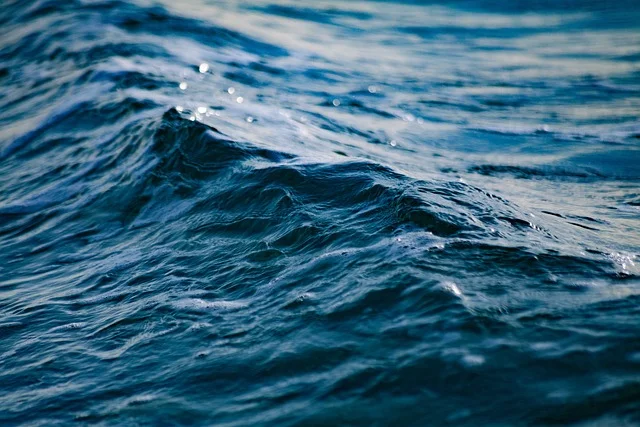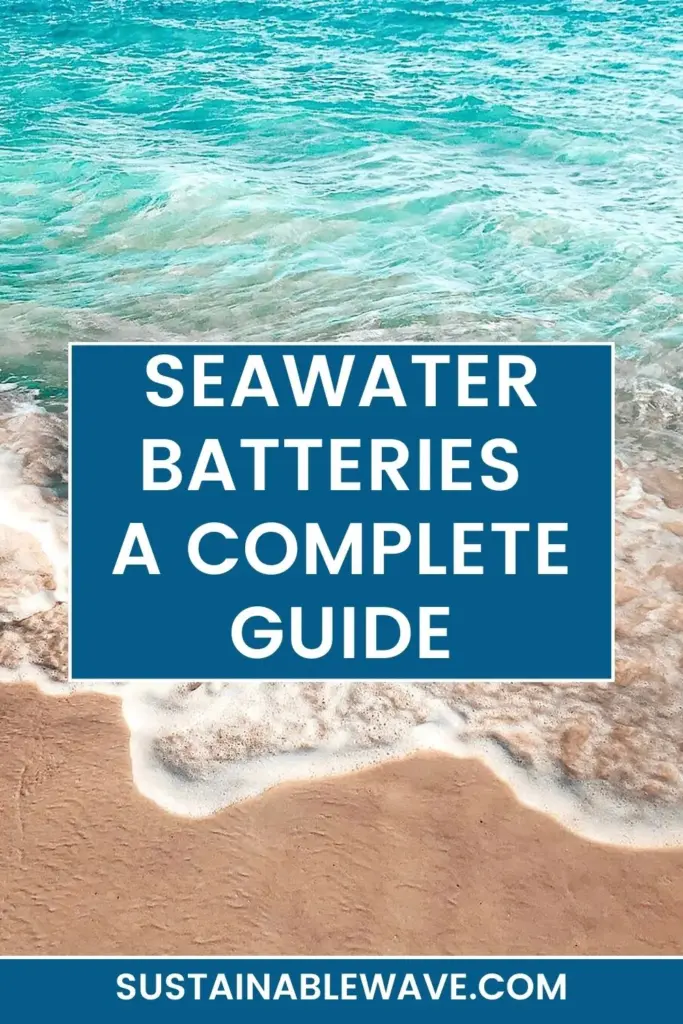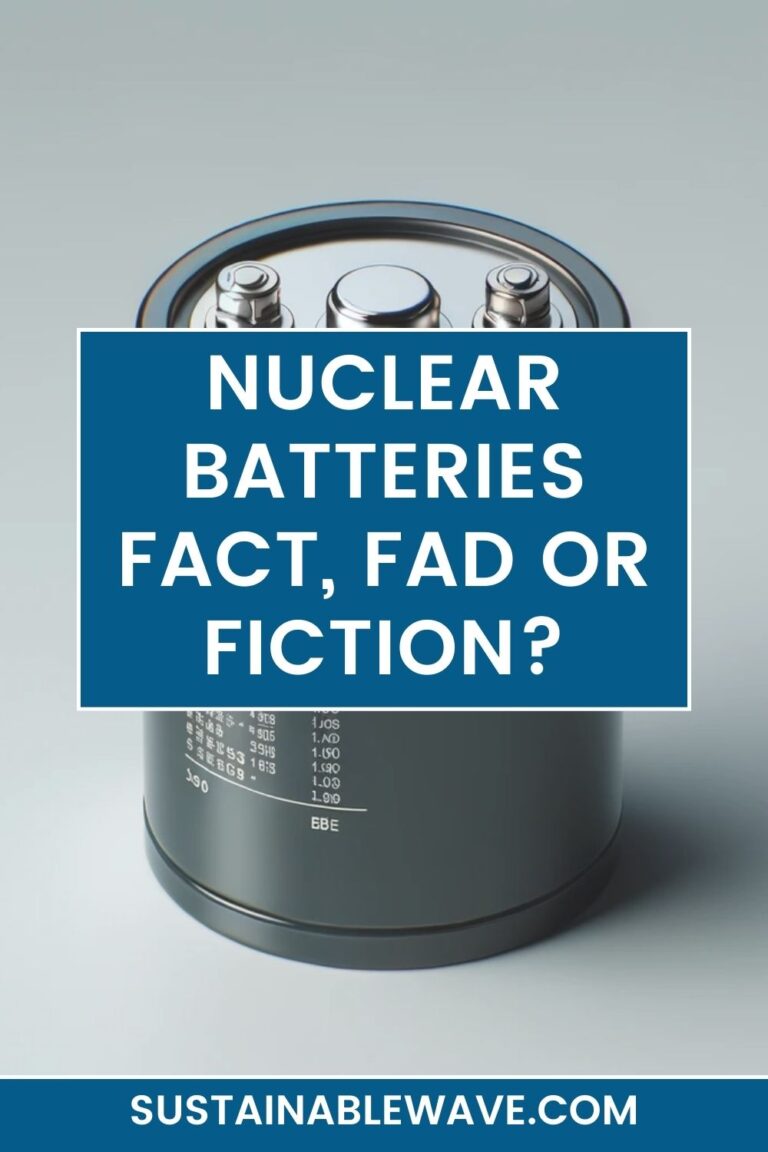The concept of seawater batteries isn’t new. For years, scientists and researchers have tinkered with the idea. But what’s all the hubbub about?
Seawater batteries, as the name suggests, use seawater as an essential component. The idea was floated around in the 20th century, but it’s only in recent years that the spotlight has shone brightly on them.
Amidst the push for sustainable energy solutions, seawater batteries have emerged as a potential contender. Their low environmental footprint and abundant seawater make them a hot topic for green energy enthusiasts.
Seawater Batteries – How Do They Work?

Seawater batteries, at their core, rely on the abundant salts in the seawater. But it’s not just about having salt; it’s about how these batteries utilize these salts to generate power. The primary mechanism involves the movement of ions, particularly sodium and chloride ions present in the seawater.
When a seawater battery operates, it employs a cathode (often made from manganese dioxide or another compound) and an anode (typically made from aluminum or a similar material). During the discharging process, the sodium ions travel through a separator toward the cathode, reacting and producing electricity.
This flow of ions between the anode and cathode, facilitated by the electrolytic properties of seawater, is the key to the battery’s power generation.
The underlying science of seawater batteries isn’t too different from traditional batteries. The main difference lies in the electrolyte. In most batteries, the electrolyte is a chemical compound, but in the case of seawater batteries, it’s the saltwater itself.
The essential science here revolves around electrochemistry. When the battery is in operation, oxidation occurs at the anode, leading to the release of electrons. These electrons then travel through a circuit, providing electric power, before arriving at the cathode, where reduction occurs.
This continuous flow of electrons, facilitated by the movement of ions in the seawater, generates electricity. The specific reactions can vary based on the materials used. For instance, with a manganese dioxide cathode, the sodium ions from the seawater react to form sodium manganese oxide.
Advantages of Seawater Batteries
The surge in interest in seawater batteries isn’t just a fad; it’s backed by some tangible benefits that these batteries offer:
- Environmental Friendliness: One of the most prominent advantages is the eco-friendliness of seawater batteries. Traditional batteries often use chemicals that can be hazardous when disposed of. Seawater batteries, on the other hand, use the natural electrolyte available in abundance, reducing the environmental footprint.
- Cost-Efficiency: Seawater is virtually free and abundant, making it a cost-effective resource. This abundance can drive down the prices of seawater batteries in the long run, making them more affordable than many other battery types.
- Reduced Reliance on Rare Materials: Many contemporary battery technologies, especially those used in electronics and electric vehicles, rely on rare earth metals. These materials are not only expensive but also have geopolitical implications. Seawater batteries can reduce this reliance.
- Potential for High Energy Density: Early research indicates that with further advancements, seawater batteries could achieve energy densities comparable to, or even surpassing, some of today’s standard batteries. This potential opens doors for their application in diverse fields, from powering homes to electric vehicles.
- Scalability: Given the vast reserves of seawater, scaling up the production and use of these batteries is feasible. This scalability could lead to widespread adoption, especially in coastal regions.
Disadvantages of Seawater Batteries
But it’s not all sunshine and rainbows, there are also some disadvantages when it comes to seawater batteries:
- Energy Density: Current seawater batteries have a lower energy density compared to established battery types like lithium-ion, limiting their use in high-energy, compact applications.
- Corrosion Concerns: Being exposed to saline conditions could make these batteries more prone to corrosion, potentially affecting their lifespan.
- Emerging Technology: As a relatively new technology, there may be challenges or limitations that have not been fully identified or addressed.
- Processing Infrastructure: While seawater is plentiful, setting up the infrastructure to purify and process it for battery use could demand significant resources.
- Transition Challenges: Shifting to a new energy storage system involves considerable investment in R&D and efforts to raise public awareness, which could hinder quick adoption.
Seawater Batteries Vs. Traditional Batteries
The quest for sustainable energy solutions has ignited interest in various alternative battery technologies, with seawater batteries being a notable contender. But how do they stack up against the traditional batteries we’ve used for decades?
The main difference between seawater batteries and traditional batteries is that seawater batteries use seawater as an electrolyte, offering eco-friendly energy storage, while traditional batteries rely on chemical compounds or metals as electrolytes, which can be environmentally hazardous and more expensive. The energy density of current seawater batteries is typically lower than that of conventional batteries like lithium-ion.
Let’s break down the comparison between seawater batteries and their conventional counterparts.
Composition and Materials
Traditional Batteries: These usually consist of electrodes made from materials like lead, nickel, cadmium, or lithium. The electrolytes in these batteries can range from acidic solutions to lithium salts in organic solvents.
Seawater Batteries: The standout feature here is the use of seawater as an electrolyte. The electrodes can vary but often include materials like aluminum for the anode and manganese dioxide for the cathode.
Environmental Impact
Traditional Batteries: One of the primary concerns with many conventional batteries, especially lead-acid and nickel-cadmium batteries, is their environmental impact. These batteries contain hazardous materials that, when improperly disposed of, can leach into the environment, posing risks to both nature and humans.
Seawater Batteries: Given that they use seawater as an electrolyte, these batteries promise a more eco-friendly alternative. The materials involved are often less hazardous, and there’s potential for a lower environmental footprint during both production and disposal.
Cost Implications
Traditional Batteries: The cost can vary widely based on the type. For instance, lithium-ion batteries, commonly used in modern electronics and electric vehicles, tend to be more expensive, especially due to the fluctuating prices of rare metals involved.
Seawater Batteries: The primary cost advantage lies in the electrolyte. Seawater is plentiful and essentially free. While there are still costs associated with electrode materials and production, the potential for cost savings is significant, especially when scaled.
Energy Density and Efficiency
Traditional Batteries: Lithium-ion batteries, in particular, are known for their high energy density, which is why they’re preferred for applications where size and weight matter, such as in smartphones and electric cars.
Seawater Batteries: Currently, the energy density of seawater batteries is still a topic of research and development. While they might not match lithium-ion batteries in this aspect yet, there’s potential for growth as the technology matures.
Lifespan and Durability
Traditional Batteries: The lifespan varies by type. While some batteries, like those in smartphones, may last a few years before seeing a significant decrease in capacity, others, like lead-acid batteries in backup power systems, can last much longer.
Seawater Batteries: Preliminary data suggests a promising lifespan, especially when considering the reduced risk of electrolyte leakage or degradation. However, more research is needed to provide a definitive comparison.
Geopolitical Implications
Traditional Batteries: The reliance on rare metals, especially for lithium-ion batteries, has geopolitical ramifications. The majority of these metals come from specific regions, leading to potential supply chain vulnerabilities.
Seawater Batteries: A shift towards seawater batteries could reduce the dependence on these rare metals, potentially leading to a more resilient supply chain and decreased geopolitical tensions related to resource access.
How to Manufacture Seawater Batteries
The production of seawater batteries is a multi-step process that leverages the unique characteristics of seawater as an electrolyte. Here’s a detailed breakdown of the procedure:
1. Collection and Purification of Seawater
- Collection: The initial step involves sourcing seawater from oceans or seas. The location and depth can influence the quality and mineral concentration.
- Purification: Before use, the seawater undergoes a purification process to remove impurities, microorganisms, and any solid particulates.
2. Preparation of Electrodes
- Material Selection: Materials like aluminum (for anodes) and manganese dioxide (for cathodes) are often chosen due to their favorable electrochemical properties.
- Formation: These materials are processed, often through pressing or sintering, to form the respective electrodes.
3. Electrolyte Preparation
- Seawater can be used directly as an electrolyte, but in some designs, it might be treated with additives to enhance conductivity or to optimize its electrochemical properties.
4. Battery Assembly
- Placement of Electrodes: The prepared anode and cathode are carefully positioned within the battery casing.
- Introduction of Seawater: The purified or treated seawater is then introduced, ensuring the electrodes are properly submerged.
- Sealing: The battery is then sealed to prevent any leakage or external contamination.
5. Quality Control and Testing
- Before commercial use, each battery undergoes rigorous testing to ensure its performance, safety, and longevity. This can involve charge-discharge cycles, stress tests, and leakage checks.
6. Final Packaging and Shipment
- Once verified, the batteries are packaged suitably, taking care to prevent any damage during transportation. They are then ready to be shipped to various markets or integration points.

I’m Thomas, the owner of SustainableWave. Passionately promoting a sustainable planet. With experience in various eco-roles, I’ll share green tips, sustainability hacks, and personal eco-journeys on my blog.






